In 2024, the walking stick industry continues to redefine itself with innovative designs and enhanced functionalities. These tools, far from being mere hiking aids, have evolved into sophisticated equipment offering stability, support, and comfort to enthusiasts and professionals alike. They cater to a diverse range of needs, from navigating rugged terrains to ensuring safety and improving posture. With technology and design at their core, the latest models promise to deliver unparalleled performance and durability. As the market expands, these walking sticks not only represent an essential accessory for outdoor activities but also reflect a commitment to quality and efficiency in personal mobility solutions. This introduction sets the stage for an in-depth exploration of the top walking stick products poised to shape the industry in 2024.
Table of Contents
1. Varieties and applications of walking sticks
2. 2024 walking stick market dynamics
3. Key considerations for selecting walking sticks
4. Leading walking stick models of 2024
5. Conclusion
Varieties and applications of walking sticks
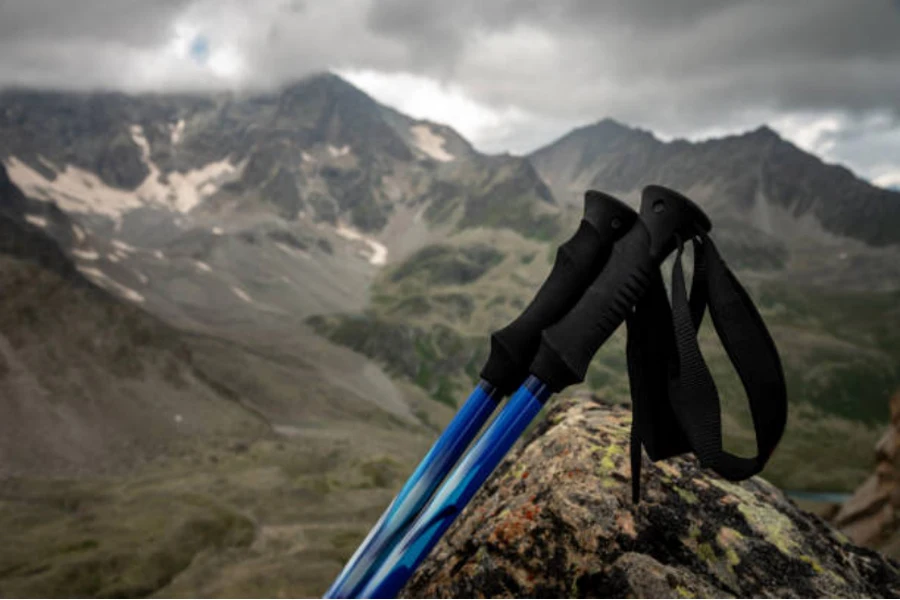
Different types of walking sticks
The walking stick landscape in 2024 is as diverse as the terrains they traverse. At the forefront are the Cascade Mountain Tech Aluminum Quick Lock Trekking Poles, known for their lightweight aluminum construction and quick lock convenience. They epitomize the trend towards gear that is both easy to use and robust. On the other end of the spectrum, the Black Diamond Alpine Carbon Cork Trekking Poles and Foxelli Carbon Fiber Trekking Poles represent the pinnacle of lightweight, high-performance design. Made from carbon fiber, these models offer unmatched strength and shock absorption, ideal for those seeking durability without the burden.
Then there are specialized models like the Leki Cressida FX Carbon AS Trekking Pole, designed with women in mind, featuring an ergonomic build and a dynamic suspension system for enhanced comfort. Similarly, the Real Nordic Walking Poles from SWIX of Norway bring a touch of Scandinavian design, known for their durable carbide metal tips and ergonomic cork grips, catering to a more mature demographic seeking stability and comfort.
Practical uses across various terrains

Walking sticks in 2024 are not just about aiding mobility; they are about enhancing the outdoor experience across various terrains. The Cascade Mountain Tech poles, with their quick lock feature, are perfect for those who frequently adjust their poles for varying terrains, from steep ascents to leisurely walks. Their aluminum build offers the right balance between weight and durability, making them versatile for most conditions.
For more rugged terrains, the Black Diamond and Foxelli carbon fiber models stand out. Their lightweight design reduces fatigue, while the carbon fiber construction absorbs the shock, making each step steadier. These poles are particularly beneficial for long treks on uneven surfaces, where stability and endurance are paramount.
In snowy or icy conditions, the Leki Cressida with its dynamic suspension system provides extra stability, reducing the strain on joints and muscles. Its design ensures that each step is secure, even in the most challenging conditions. Meanwhile, the Real Nordic Walking Poles are perfect for those who need reliable support on both outdoor adventures and daily walks. Their design focuses on balance and stability, which is particularly beneficial for users with mobility issues or those recovering from injuries.
As the industry continues to evolve, the applications of walking sticks become ever more varied, catering to a wide range of needs and preferences. From casual walkers to serious hikers, from young adventurers to senior citizens, the walking stick of 2024 is a testament to how far the industry has come in understanding and addressing the diverse needs of its users. Each model brings something unique to the table, ensuring that there is a perfect walking stick for every terrain and every user.
2024 walking stick market dynamics
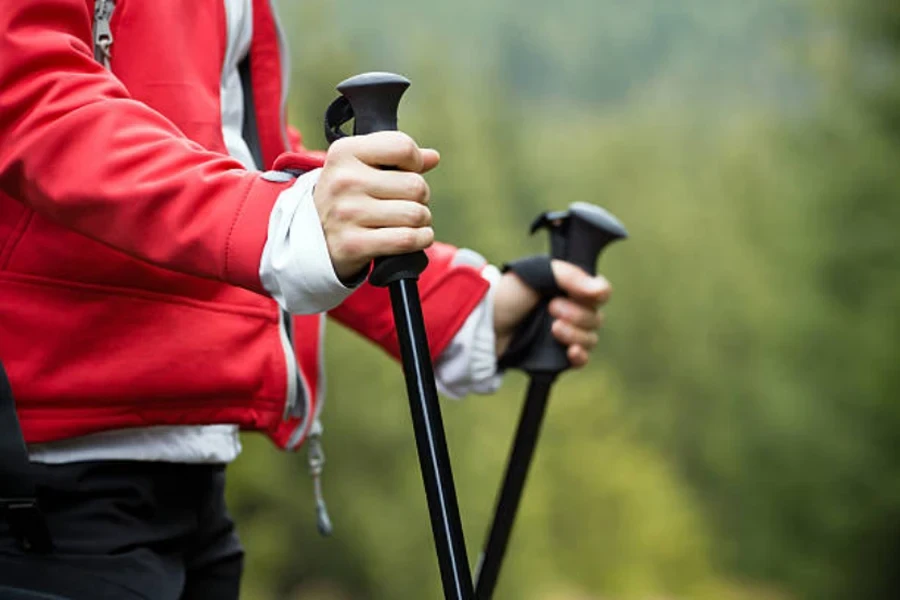
Current market trends and consumer preferences
The walking stick market in 2024 is characterized by rapid expansion and increasing interest from global investors and key players. Experts currently value the Trekking Poles market at USD 71.01 million in 2022, and they expect it to reach USD 103.16 million by 2030. They estimate this boost will happen at a 4.90% compound annual growth rate (CAGR) from 2023 to 2030. The market’s growth is primarily driven by increasing demand for outdoor recreation activities and a rising awareness of the health and fitness benefits associated with these activities, and moreover, a surge in demand for innovative and specialized walking sticks, as seen in the popularity of models like the Cascade Mountain Tech Aluminum Quick Lock Trekking Poles and the Black Diamond Alpine Carbon Cork Trekking Poles. Consumer preferences are leaning towards lightweight and durable materials, with a significant portion of the market favoring carbon fiber construction for its strength and shock-absorbing properties.
The market is also witnessing a shift towards more ergonomic designs, catering to specific user groups such as women and the elderly. This is exemplified by the Leki Cressida FX Carbon AS Trekking Pole, which is specifically designed for women, and the Real Nordic Walking Poles from SWIX of Norway, which are favored for their stability and comfort. The demand for these specialized products is not only shaping the current market but also setting trends for future developments.
Technological advancements in walking stick design

Technological innovation is at the heart of the walking stick market’s evolution in 2024. Advanced materials like carbon fiber are becoming more prevalent, offering users a blend of lightweight design and durability. This is evident in the Foxelli Carbon Fiber Trekking Poles, which represent the cutting edge of walking stick technology.
Moreover, the market is seeing a rise in features that enhance user experience, such as quick lock mechanisms for easy adjustability and dynamic suspension systems for improved comfort. These features are not just adding value to the products but are also raising the standards for what consumers expect from walking sticks.
The integration of ergonomic design is another significant advancement. Manufacturers are focusing on creating products that are not only functional but also comfortable to use over extended periods. This is particularly important for users who rely on walking sticks for stability and support, as seen in the design of the ergonomic grips and straps in the leading models.
In conclusion, the walking stick market in 2024 is a landscape of innovation, driven by consumer preferences for specialized, lightweight, and ergonomic products. The advancements in technology and design are not only meeting the current demands but are also paving the way for future developments in the industry.
Key considerations for selecting walking sticks
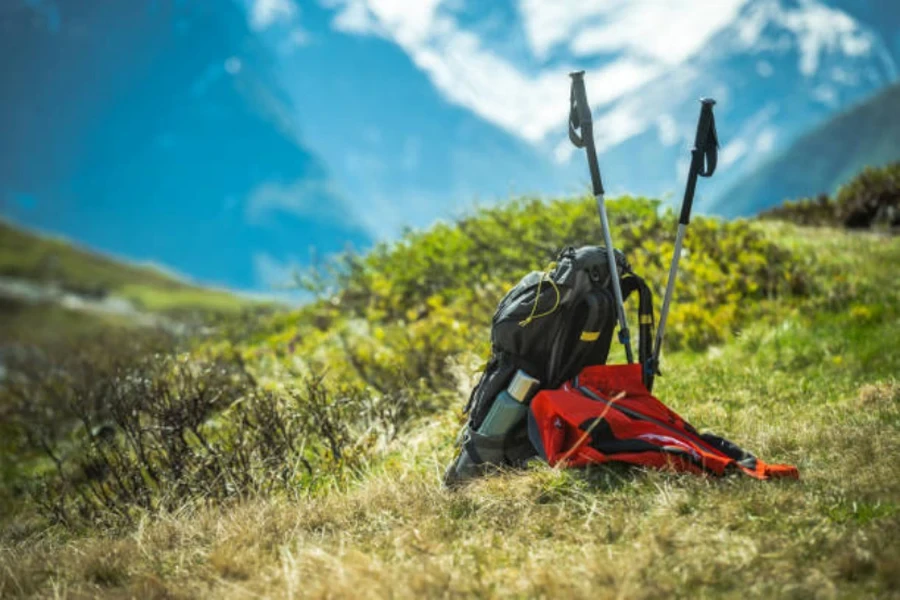
Material and durability: Carbon fiber vs. aluminum
The choice between carbon fiber and aluminum trekking poles hinges on a balance between weight and durability. Carbon fiber poles, typically weighing between 12 to 18 ounces per pair, are favored for their lightweight nature, making them ideal for long-distance hikers looking to minimize fatigue. They provide immediate support due to minimal flex and don’t vibrate as much, offering a more comfortable experience. However, their durability can be a concern; while high-quality carbon fiber poles can withstand significant top-to-bottom forces, they are less resilient against side-to-side stress and can shatter if the resin becomes fatigued or the fibers are damaged.
On the other hand, aluminum trekking poles, often made from robust 7075 alloy, are slightly heavier, ranging from 18 to 22 ounces per pair. Their main advantage lies in their ruggedness. Even when bent under extreme stress, aluminum poles can often be straightened and reused, offering a “second chance” unlike their carbon counterparts. They are generally more affordable and reliable, even in budget models. However, their thicker shafts make them heavier, and they are prone to vibrations due to the metal’s less stiff nature. For those frequently embarking on intense hikes, aluminum poles made from 7075 alloy are recommended for their superior durability and ability to withstand rugged conditions.
Ergonomics and comfort: Grip and strap design
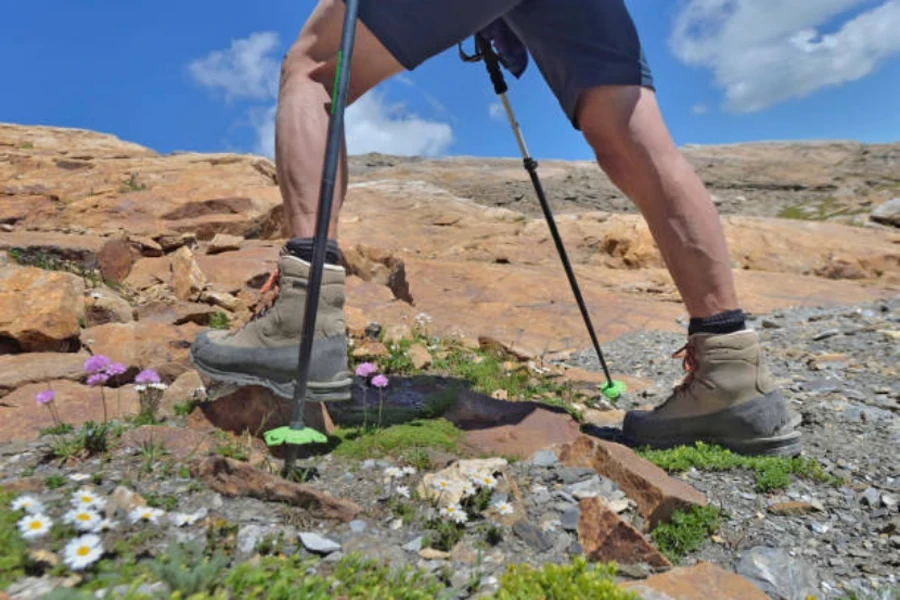
Ergonomics in trekking poles is primarily defined by the grip and strap design, which directly impacts the user’s comfort and control. For instance, the LEKI Micro Vario carbon fiber poles feature a foam grip that works well in both cold and hot conditions due to its moisture-wicking properties. The grip is part of the pole’s ELD (External Locking Device) system, which ensures easy setup and tensioning. The proprietary SpeedLock system allows for quick height adjustments, holding the section in place securely, which is crucial for maintaining comfort over varying terrains.
In contrast, the Black Diamond Trail Ergo aluminum poles are known for their cork grips. Cork not only provides a fantastic grip and manages moisture but also molds to the user’s hands over time, enhancing the personalized feel. The 15° angled design of the grips ensures a natural hand position, reducing stress on the arm joints and wrists. The presence of adjustable wrist straps further reduces stress on the joints, providing a secure and comfortable experience.
Both carbon fiber and aluminum poles offer unique ergonomic benefits. The choice between them should be based on individual preferences for weight, durability, and the specific ergonomic features that best suit the user’s needs and hiking style. Whether opting for the lightweight comfort and support of carbon fiber or the rugged, reliable nature of aluminum, the right trekking poles can significantly enhance the hiking experience.
Adjustability and portability: Telescoping and folding mechanisms

Adjustability in trekking poles is a critical feature, allowing users to adapt the pole length to their height and the terrain. Most poles offer an adjustable length, with some models like the LEKI Micro Vario featuring a range from 44” to 55”. This adjustability is crucial for maintaining comfort and efficiency, especially when transitioning between different types of terrain. For uphill climbs, shorter poles offer better leverage, while longer poles provide more stability on descents. The adjustability mechanism itself varies, with some models using a twist-lock system and others employing a more user-friendly lever-lock system, like the SpeedLock found in the LEKI poles.
Portability is another key factor, particularly for those who travel or hike long distances. Folding poles, such as the LEKI Micro Vario, can collapse down to a more compact size, making them easier to pack and carry. This feature is especially beneficial for backpackers or those with limited storage space. The ease of assembly and disassembly also plays a role in the user experience, with some poles featuring an internal mechanism that keeps them tensioned and ready for quick setup.
Special features: Shock absorption and terrain compatibility

Shock absorption is a feature often found in higher-end trekking poles, designed to reduce the impact on the user’s body. This feature is particularly beneficial for those hiking on hard or rocky terrain, as it helps to alleviate stress on the joints. Poles with shock absorption, like certain models from Black Diamond, can make a noticeable difference in comfort during long hikes.
Terrain compatibility is another important consideration. The choice of tips and baskets on the poles can greatly affect their performance on different surfaces. Carbide or steel tips are common for providing traction on rough or icy terrain, while rubber tip protectors can extend the life of the tips and protect gear when the poles are stowed. Some poles come with interchangeable tips and baskets, allowing users to customize their poles for different conditions, such as swapping standard trekking baskets for snow baskets in winter conditions.
In summary, when selecting trekking poles, it’s important to consider the adjustability and portability features, as well as special features like shock absorption and terrain compatibility. These factors can greatly influence the overall hiking experience, providing stability, comfort, and adaptability to a wide range of environments and personal preferences.
Leading walking stick models of 2024
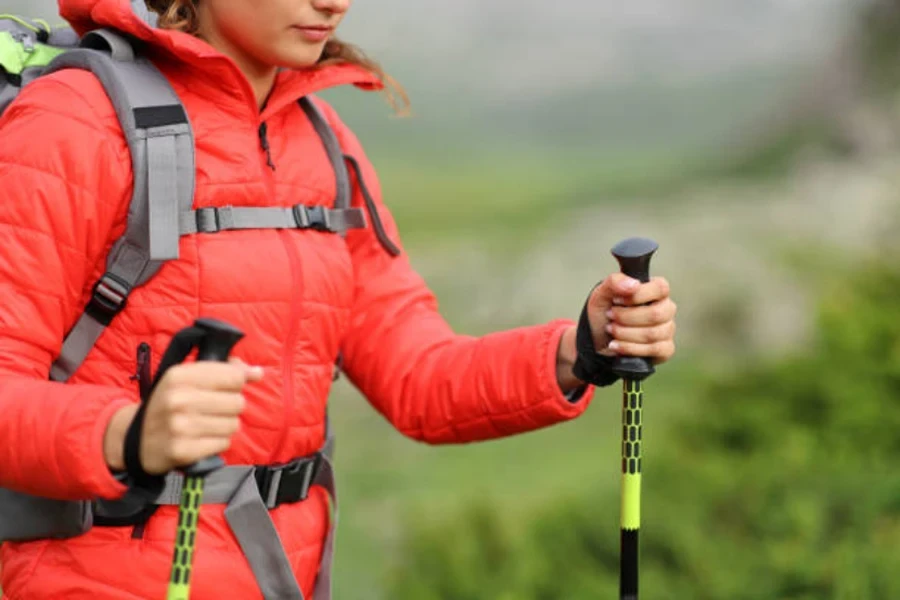
Cascade Mountain Tech Aluminum Quick Lock Trekking Poles
Cascade Mountain Tech Aluminum Quick Lock Trekking Poles are renowned for their lightweight and durable design. Weighing under 1lb for a pair, these poles are constructed from carbon fiber, offering a balance between strength and portability. The quick lock snaps ensure easy and reliable height adjustment, catering to users of varying statures. The cork handles are designed to shape to your hand over time, providing a personalized and comfortable grip. Additionally, the poles come equipped with wrist straps, snow discs, mud baskets, a carbide tip, and a rubber cap, making them versatile for various terrains and conditions. However, some users have reported issues with the poles wobbling on uneven terrain, which could be a concern for more rigorous hikes.
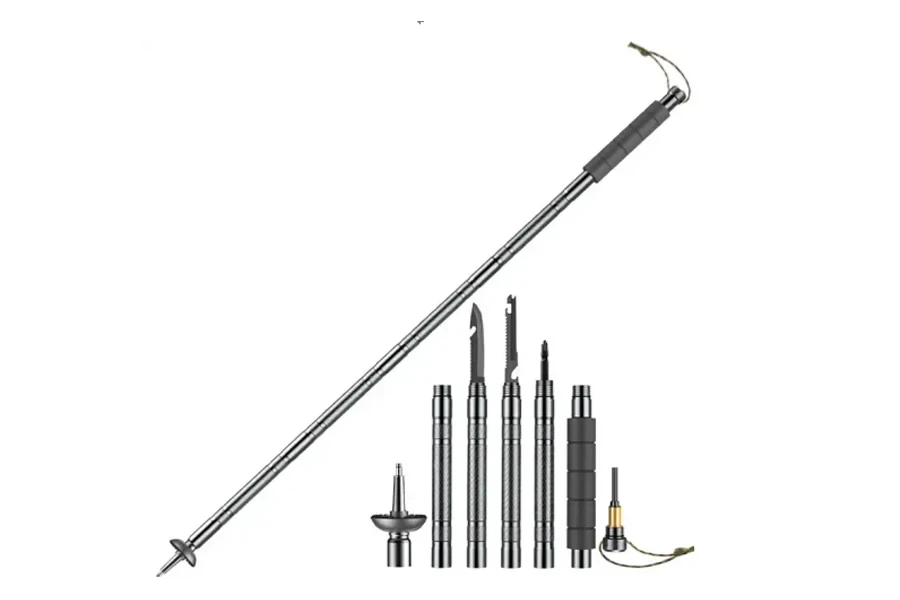
Black Diamond Alpine Carbon Cork Trekking Poles
The Black Diamond Alpine Carbon Cork Trekking Poles are celebrated for their robust construction and comfort. Made with thicker carbon than average, they offer a strong build without compromising on weight, making them lighter than most aluminum poles. The cork handle molds to the user’s hands over time, providing a custom fit that enhances comfort. These poles also feature a foam grip extension below the main grip, useful for steep climbs. The wide and comfortable wrist straps are labeled for right and left-hand use, ensuring proper fit and support. While not the lightest or most packable, their durability, comfort, and versatility make up for these aspects.
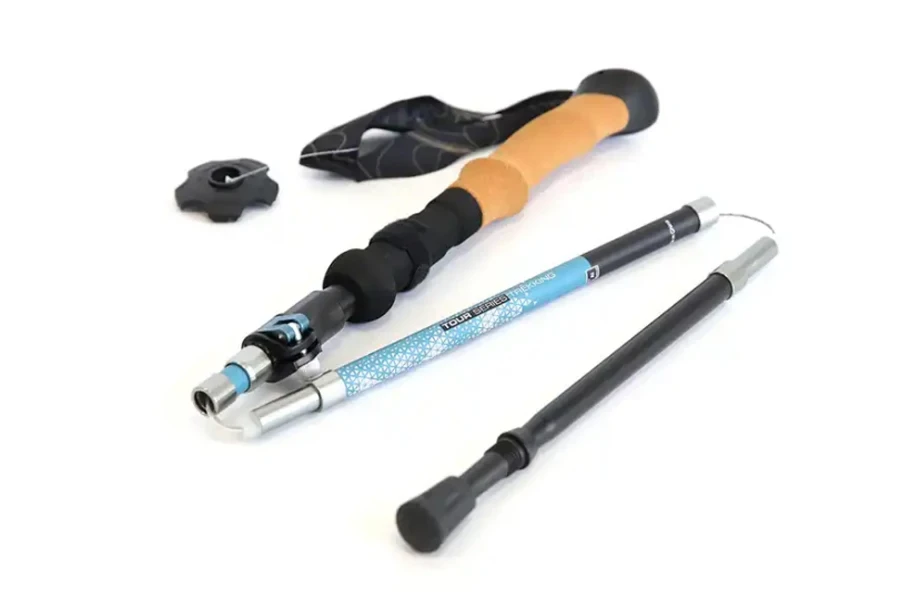
Foxelli Carbon Fiber Trekking Poles
Foxelli Carbon Fiber Trekking Poles are designed for performance, comfort, and safety. These ultralight poles are 35% lighter than their aluminum counterparts, making them a favorite among those who prefer a lightweight option. The adjustable quick lock technology ensures a customizable fit, while the shock-absorbent materials minimize impact on the legs, knees, ankles, and feet. The ergonomic 100% natural cork grip with an extended EVA foam sleeve offers ultimate comfort and durability under all trekking conditions. The poles are retractable from 24” to 55”, catering to both adults and children, and come with extra padded adjustable wrist straps and 4-season accessories.
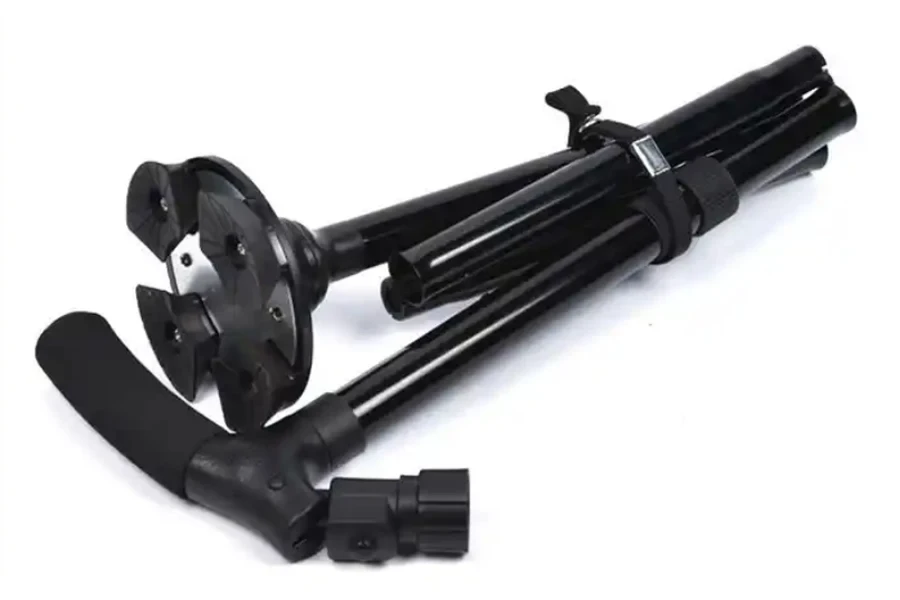
Leki Cressida FX Carbon AS Trekking Pole
The Leki Cressida FX Carbon AS Trekking Pole is known for its brilliant design, offering versatility, comfort, and compactness. The moisture-wicking cork grips mold to your hands over time, providing a comfortable and personalized grip. The carbon shafts dampen trail vibrations, reducing the harshness of the trail while hiking. These poles also feature user-friendly locking and adjustment mechanisms, making them easy to adjust on the go. While they have an average weight, they fold down small enough to be stashed in your pack when not in use. They are compatible with different tips and baskets, making them suitable for a variety of activities and conditions.
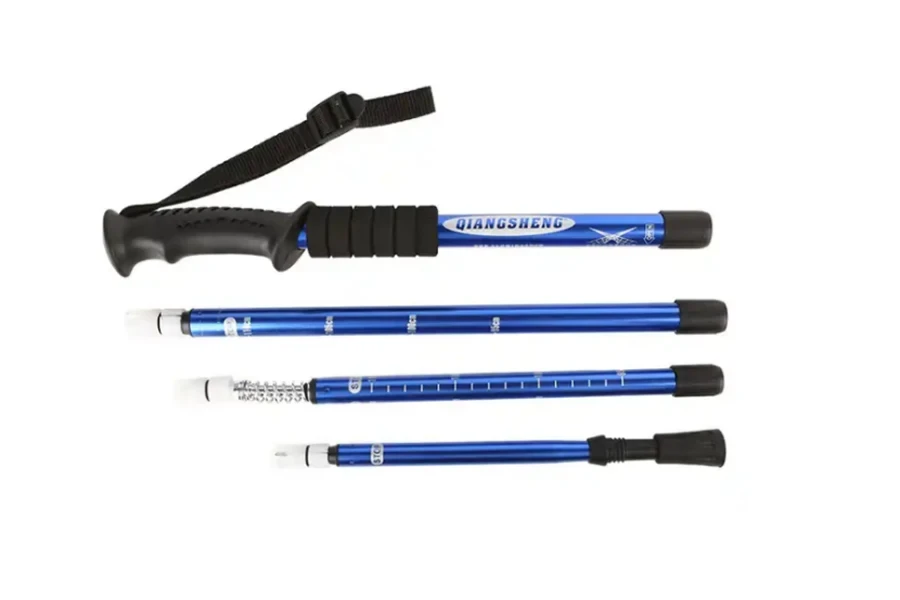
Real Nordic Walking Poles from SWIX of Norway
Real Nordic Walking Poles from SWIX of Norway are designed to provide better weight distribution and balance, especially for those hiking with a heavy backpack. These poles are made to reduce strain on the back and knees, offering a more comfortable trekking experience. While specific features and benefits of these poles are not detailed, Nordic walking poles are generally known for their sturdy construction and ergonomic design. They often come with features like adjustable lengths, comfortable grips, and durable tips, making them suitable for various terrains and conditions.
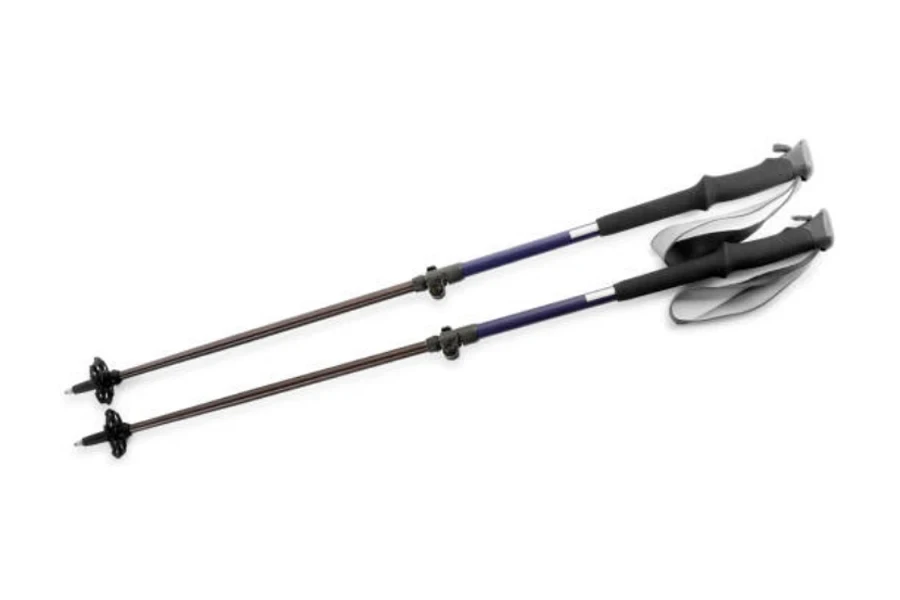
These leading models of walking sticks in 2024 offer a range of features and benefits to cater to different needs and preferences. From lightweight and portable options to durable and versatile designs, each model brings something unique to the table, ensuring there’s a perfect walking stick for every trekker.
Conclusion
The 2024 walking stick landscape presents an array of sophisticated options, each tailored to enhance the trekking experience with a focus on material innovation, ergonomic design, and versatile functionality. As the industry evolves, the selection for the right walking stick becomes a blend of personal preference and practical necessity, ensuring every trekker finds their ideal match for comfort, stability, and endurance on their journeys. This guide serves as a compass, pointing towards informed decisions in a market rich with quality and innovation.





 Afrikaans
Afrikaans አማርኛ
አማርኛ العربية
العربية বাংলা
বাংলা Nederlands
Nederlands English
English Français
Français Deutsch
Deutsch हिन्दी
हिन्दी Bahasa Indonesia
Bahasa Indonesia Italiano
Italiano 日本語
日本語 한국어
한국어 Bahasa Melayu
Bahasa Melayu മലയാളം
മലയാളം پښتو
پښتو فارسی
فارسی Polski
Polski Português
Português Русский
Русский Español
Español Kiswahili
Kiswahili ไทย
ไทย Türkçe
Türkçe اردو
اردو Tiếng Việt
Tiếng Việt isiXhosa
isiXhosa Zulu
Zulu